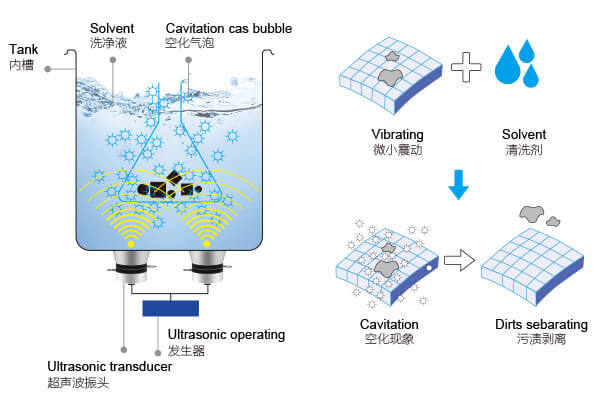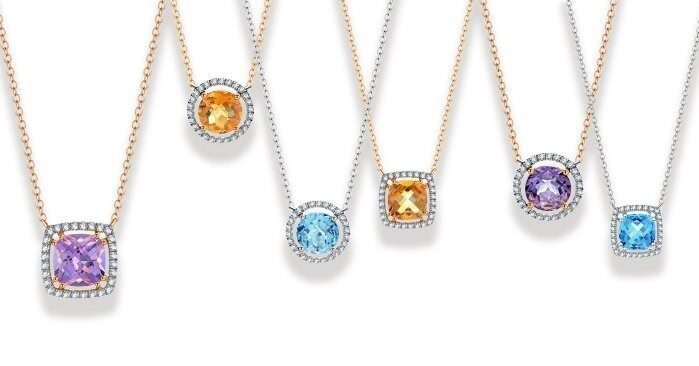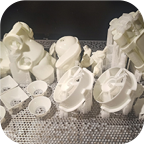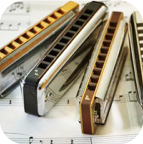How Safe Are Ultrasonic Cleaners for Jewelry
Browse Volume:26 Classify:Support
There’s something undeniably satisfying about watching years of grime lift from a diamond ring in seconds. With a quiet hum and a cloud of microscopic bubbles, ultrasonic cleaners promise to restore your jewelry’s sparkle with almost no effort. These devices, once limited to professional workshops, have made their way into homes around the world—touted as a must-have gadget for DIY jewelry care.
It’s easy to see why. Ultrasonic cleaners are compact, affordable, and often marketed with promises like “restore shine instantly” or “gentle yet effective.” Online videos show dramatic before-and-after results, and many users claim they’ve never seen their rings look better.
But beneath the allure of sonic precision lies a more complicated truth. As more people bring ultrasonic cleaners into their homes, a growing number of jewelers and gemologists have raised a critical question: Are ultrasonic cleaners actually bad for jewelry? The answer depends on what kind of jewelry you’re cleaning—and how you’re using the device.
How Ultrasonic Cleaners Work on Jewelry
To understand the risks and benefits of ultrasonic cleaning, it helps to know how the technology functions.
Ultrasonic cleaners use high-frequency sound waves, typically ranging from 20,000 to 40,000 cycles per second (Hz), to agitate a liquid solution. This process creates tiny, rapidly collapsing bubbles in a phenomenon known as cavitation. When these microbubbles implode near a surface—such as the contours of a gemstone or the crevices of a chain—they dislodge dirt, oils, polishing compounds, and other contaminants.
The magic lies in the mechanical force of these microscopic explosions. Cavitation reaches into places where toothbrushes, cloths, and even steam can’t. It’s ideal for getting grime out of tight spots like under stone settings or between links in a bracelet.
However, this same process can be surprisingly aggressive, especially to materials that are porous, fragile, glued, or otherwise sensitive to vibration. The effectiveness of ultrasonic cleaning varies depending on:
- Frequency: Lower frequencies (20–28 kHz) produce more powerful, larger cavitation bubbles. Higher frequencies (40–80 kHz) are gentler, better for delicate items.
- Cleaning solution: The composition of the liquid—whether plain water, mild detergent, or ammonia-based formula—alters how cavitation behaves.
- Exposure time: Leaving jewelry in too long can lead to microdamage, even if the device appears gentle.

The Principle Behind Ultrasonic Cleaning
While cavitation is powerful, it isn’t intelligent. The machine doesn’t know whether it’s working on a diamond with solid gold prongs or a fracture-filled emerald in a vintage setting. It treats every object the same—and that’s where things can go wrong.
What Types of Jewelry Are Generally Safe in Ultrasonic Cleaners
Not all jewelry is at risk. In fact, many pieces benefit greatly from ultrasonic cleaning—if they meet the right criteria. The safest candidates are those made of hard, stable materials with secure mountings and no hidden treatments.
Diamonds top the list. As the hardest known natural material (Mohs scale 10), diamonds can withstand ultrasonic vibration extremely well—especially if they are not fracture-filled or coated. Rubies and sapphires, both varieties of corundum (Mohs scale 9), also hold up well in ultrasonic machines, provided they haven’t undergone treatments such as glass filling or oiling.
Solid gold, platinum, and titanium jewelry—especially those with sturdy prong settings or minimal surface detail—are also generally safe. Wedding bands, solitaire engagement rings, and unadorned chains made from these metals often come out of ultrasonic cleaning brilliantly polished, especially when paired with a mild professional-grade cleaning solution.
That said, even “safe” materials aren’t immune to careless use. If a prong is already loose or if dirt has weakened a clasp over time, ultrasonic vibration might make the problem worse. That’s why pre-cleaning inspection is vital, even for pieces considered low-risk.

jewelry cleaner
Which Jewelry Should Never Go in an Ultrasonic Cleaner
Despite their popularity, ultrasonic cleaners are not safe for all types of jewelry. In fact, placing the wrong item into one of these devices can lead to irreparable damage—sometimes invisible until it’s too late.
Jewelry featuring porous or organic gemstones is especially vulnerable. Stones like pearls, opals, turquoise, amber, and coral are naturally soft or contain microscopic inclusions and cavities. Ultrasonic cavitation can exacerbate internal fractures or, in the case of pearls, strip away nacre (the shiny, outer layer), leaving them dull or even cracked.
Another major red flag: treated gemstones. Many emeralds, for instance, are fracture-filled with resin or oil to improve clarity. These substances can leak out, crack, or become cloudy under the stress of ultrasonic vibrations and heat. Similarly, heat-treated sapphires or irradiated topaz may suffer from color changes or structural degradation when exposed to strong frequencies.
Avoid cleaning any jewelry with glued settings, such as vintage costume pieces or contemporary pieces where stones are affixed with epoxy rather than held by prongs. Ultrasonic vibrations can weaken or dissolve adhesives, causing stones to fall out—sometimes right in the tank.
Even enamel and filigree work, common in antique jewelry, can crack or flake under the pressure of ultrasonic cavitation. These pieces are often best cleaned manually, with the utmost care.
It’s also risky to clean multiple types of jewelry at once, especially if one is harder than another. A diamond earring and a soft gold chain cleaned together can cause surface scratching through vibration collision.
If in doubt, always consult a professional jeweler before using an ultrasonic cleaner. Damage caused by these machines is often non-reversible and not covered by jewelry warranties.
Gemologists and Experts Weigh In: Is It Really That Risky?
When it comes to ultrasonic cleaning, expert opinions tend to fall into two camps: cautious approval under strict conditions, and firm opposition for anything not clinically safe.
The Gemological Institute of America (GIA), one of the most authoritative voices in gemology, states clearly on their care guides:
“While ultrasonic cleaners may be appropriate for diamonds, sapphires, and rubies, they should not be used on fracture-filled, oiled, or coated stones, or on any porous materials like turquoise or pearls.”
(Source: GIA Jewelry Care)
Dr. Jeffrey Post, former curator of the Smithsonian’s National Gem and Mineral Collection, has warned that “many damage incidents with ultrasonic cleaning arise not from the machine, but from the user not knowing the gemstone’s treatment history.”
Jewelers surveyed by the Jewelers of America organization echoed similar sentiments. Most said they do use ultrasonic cleaners professionally, but only after careful inspection. Before any item enters the tank, it is checked under magnification for loose stones, weak prongs, or treatments that would contraindicate ultrasonic use.
Professional jewelers often rely on ultrasonic cleaners to restore shine to diamond engagement rings or solid gold jewelry—but only after cleaning solutions are carefully selected, temperatures are monitored, and exposure times are controlled.
Interestingly, many professionals also mention that they avoid ultrasonic cleaning for sentimental or heirloom pieces, even if technically safe. The emotional value of a family heirloom or vintage brooch outweighs the small benefit of ultrasonic sparkle, especially when safer methods exist.
In summary, experts don’t denounce ultrasonic cleaners entirely. But they do emphasize that these machines are tools—not miracle devices—and that understanding the materials, treatments, and vulnerabilities of your jewelry is non-negotiable.
Do Ultrasonic Cleaners Cause Metal Fatigue or Loosen Settings?
It’s easy to focus solely on gemstones when discussing ultrasonic cleaning safety, but the metal components of jewelry are also at risk. The intense high-frequency vibrations used in ultrasonic cleaning don’t discriminate. They reverberate through every part of the item placed inside the tank—including prongs, chains, clasps, and solder joints.
One of the lesser-known but significant concerns is metal fatigue. When metal is exposed to repeated vibrational stress, especially at a microscopic level, it can begin to weaken over time. This degradation doesn’t always manifest immediately. A ring may look unchanged after a cleaning session, but several months later, a prong may snap off, or a chain link may break.
This phenomenon is especially relevant in:
- Delicate vintage rings, where solder joints have aged
- Multi-stone settings, where vibration can subtly misalign stones
- Thin prongs, which may already be weakened from wear
An ultrasonic cleaner can also loosen stones, even in otherwise sturdy rings. The constant buzzing motion can jostle stones in their mountings, particularly if the prongs are slightly worn or if the settings have tiny air gaps. Over time—or even in one session—a diamond can shift, rotate, or become dislodged entirely.
Jewelry designers often use tension settings or invisible mountings that rely on pressure rather than adhesives or prongs. These modern designs are visually striking, but they can be more susceptible to vibrational interference. The cleaner may reduce the tension or compromise the mounting, increasing the risk of stone loss.
It’s no surprise that many professional jewelers inspect every piece after ultrasonic cleaning, rechecking for movement, rattling, or prong alignment. That’s a habit home users should adopt too—if they continue to use these machines at all.
Can Cleaning Solutions Contribute to Damage?
Another overlooked factor in ultrasonic jewelry cleaning is the composition of the cleaning solution. While cavitation does most of the mechanical work, the liquid inside the tank still plays a major role in determining the safety and effectiveness of the process.
Most manufacturers recommend using commercial ultrasonic cleaning solutions, which are formulated to lift oils and dirt without reacting chemically with metals or stones. However, many users substitute these with household mixtures, such as water with vinegar, ammonia, or dish soap—some of which can damage certain types of jewelry.
Let’s break down the risks:
- Ammonia, often used to brighten gold and diamonds, can corrode softer metals like silver and damage organic stones like pearls or opals.
- Acidic cleaners, like those containing vinegar or lemon juice, are abrasive to gold-plated surfaces and can cause etching in enamel or porous stones.
- Too high a pH can interact with certain gemstone coatings or dyes, causing clouding or discoloration.
Then there’s the matter of solution temperature. Many ultrasonic cleaners have built-in heaters or heat up during extended use. While warm solutions can improve cleaning efficiency, they also increase chemical reactivity and soften adhesives, which is problematic for glued settings or temperature-sensitive stones like emeralds or turquoise.
According to the Gemological Institute of America, a cleaning solution should be mild, non-abrasive, pH-neutral, and used within the manufacturer’s recommended temperature range. Anything outside those parameters increases the chance of permanent cosmetic or structural damage.
For safe use:
- Always read your jewelry’s care instructions
- Use only vetted solutions with a Material Safety Data Sheet (MSDS)
- Avoid homemade recipes unless approved by a professional jeweler
Even with the correct solution, duration still matters. Leaving a ring in too long may saturate a porous stone or weaken a setting, so it’s best to limit cleaning cycles to just a few minutes per session.
Alternatives to Ultrasonic Cleaners for Sensitive Jewelry
If ultrasonic cleaners feel too risky, you’re not alone in thinking so. Many professional jewelers recommend safer alternatives, especially for antique, fragile, or sentimental pieces.
The simplest and most effective method remains the soft brush and mild soap technique. Using a baby toothbrush and a solution of warm water with a drop of dishwashing liquid, gently scrub around the prongs and under the settings. Rinse thoroughly and dry with a lint-free cloth. This method is especially ideal for pearls, opals, turquoise, and enamel.
For deeper cleaning of dirt lodged in chain links or crevices, steam cleaning is often preferred. Jewelers use professional-grade steam jets that sanitize and polish simultaneously without the use of harsh chemicals or vibrations. While not suitable for every stone type, steam cleaning is usually safer for treated stones than ultrasonic cavitation.
Another gentle tool is the jewelry polishing cloth, typically infused with anti-tarnish compounds and micro-abrasives. These cloths are excellent for restoring shine to silver and gold surfaces without affecting stones or settings. They’re also great for quick maintenance between more thorough cleanings.
Hybrid methods are gaining popularity as well. For example, some consumers use ultrasonic cleaning for just the metal portion of a ring (with the gemstone portion held above the solution), or they use mesh baskets to reduce the impact of direct vibration.
Of course, for highly valuable or intricate items, the safest option remains professional jewelry cleaning services. These not only ensure the right method is chosen for each piece, but also come with a trained eye to spot wear and tear before it becomes a problem.
If your jewelry holds significant monetary or emotional value, skipping the ultrasonic cleaner in favor of a gentler approach may be the best long-term choice.
Are Home Ultrasonic Cleaners Different from Professional Ones?
On the surface, home ultrasonic cleaners may look like scaled-down versions of professional machines. But there are critical differences in design, power, precision, and reliability that set them apart—and these differences matter when cleaning valuable or delicate jewelry.
Professional ultrasonic units, like those used in gemological labs and high-end jewelry boutiques, typically feature:
- Adjustable frequency settings, allowing operators to select a gentler mode for fragile pieces and a more aggressive mode for solid metals.
- Advanced temperature controls, which regulate heating to avoid damaging sensitive stones.
- Higher power output and better transducer quality, ensuring consistent cavitation throughout the cleaning bath.
- Filtration systems, which remove particles during operation to prevent debris from scratching jewelry mid-clean.
Home models, by contrast, often run at a fixed frequency and temperature, typically around 40 kHz with basic or no heating controls. Some inexpensive units lack true ultrasonic capability altogether, relying on vibration motors that simulate cleaning action without delivering genuine cavitation.
Inconsistent power delivery is a common flaw in consumer-grade units. This can result in partial cleaning, or worse, uneven pressure exposure that fatigues one part of a setting more than another. These fluctuations increase the chances of stones loosening or settings bending over time.
Another important consideration is the size and shape of the tank. Professional units are deeper, with multiple transducers placed evenly to avoid “dead zones.” Home units often have small basins with limited wave distribution, meaning some parts of the jewelry may experience intense cavitation while others are barely cleaned.
These limitations don’t make home ultrasonic cleaners useless—but they do mean the margin for error is much smaller. Understanding what your machine can and can’t do is essential to keeping your jewelry safe.
Best Practices If You Still Want to Use an Ultrasonic Cleaner
For those who still choose to use ultrasonic cleaners at home, it’s crucial to follow safe operating practices to minimize risk. Proper technique often makes the difference between restoring your jewelry’s shine and unintentionally damaging it.
Start with an inspection. Before placing any piece in the cleaner, check for loose stones, bent prongs, visible cracks, or signs of wear. Use a jeweler’s loupe if possible. Even a small imperfection can worsen during cleaning.
Choose the right solution. Always use a cleaning fluid formulated for jewelry and ultrasonic cleaning. Avoid bleach, acetone, or household acids. Stick to pH-neutral, non-abrasive solutions. Make sure it’s compatible with both the metal and the gemstone.
Mind the temperature. If your cleaner heats the solution, ensure it does not exceed 50°C (122°F), especially for stones like emeralds, opals, or treated diamonds.
Use a basket. Never place jewelry directly on the metal floor of the tank. Use the provided mesh basket to suspend your pieces in the solution, which protects them from harsh vibrations and prevents contact damage.
Don’t mix items. Clean one or two pieces at a time. Mixing multiple types of jewelry—especially with differing hardness—can cause them to knock against each other and scratch.
Limit exposure. Run short cycles—typically no more than 2 to 3 minutes. If your jewelry still isn’t clean, rinse and repeat gently rather than leaving it in for extended sessions.
Rinse thoroughly. After cleaning, use warm water to rinse off any remaining solution. Gently dry with a lint-free cloth and inspect your item again for any new signs of wear or change.
And finally, don’t assume ultrasonic cleaning replaces professional care. Schedule regular checkups with your jeweler, especially for pieces worn daily or of high sentimental value.

granbo ultrasonic Jewelry Cleaning effect
When Should You Consult a Jeweler Instead?
Not all jewelry is created equal, and not all problems are visible at a glance. That’s why knowing when to consult a professional is just as important as understanding how to clean.
If you’re unsure about the gemstone or treatment history, don’t guess. Many stones are treated in ways not visible to the naked eye. A jeweler can tell you if your sapphire is heat-treated (safe) or glass-filled (not safe). Similarly, they can confirm whether your diamond is laser-drilled, fracture-filled, or coated.
If you notice any looseness, such as a stone that rattles slightly or a prong that’s shifted, skip the ultrasonic cleaner entirely. Vibrations could worsen the issue and result in stone loss.
If the jewelry is antique or handmade, avoid ultrasonic cleaning altogether unless a professional inspects it first. Vintage pieces often have aged solder, delicate joints, or unconventional settings that don’t respond well to vibration or heat.
If your jewelry has high sentimental or monetary value, err on the side of caution. The cost of a professional cleaning is minimal compared to replacing a lost stone or repairing a damaged setting.
Some signs that your jewelry needs expert care:
- Discoloration or fogging after ultrasonic use
- Visible cracks or separation between stones and metal
- Sudden dullness or texture change on the surface
Ultimately, ultrasonic cleaning is a powerful but unforgiving tool. When in doubt, professionals not only clean more safely but also assess your jewelry’s long-term wear and recommend appropriate maintenance.
Myths vs Facts: Debunking Common Misconceptions
With so many social media endorsements and product claims surrounding ultrasonic cleaners, it’s easy for myths to spread. Let’s clarify some of the most persistent misunderstandings—because false confidence is where most damage begins.
Myth 1: “If jewelers use ultrasonic cleaners, they must be safe for all jewelry.”
This is perhaps the most dangerous assumption. Yes, professionals use ultrasonic cleaning, but with strict precautions. They evaluate each item for vulnerabilities and apply the right frequency, solution, and duration. Most also have liability coverage in case something goes wrong—something home users don’t.
Myth 2: “If I don’t see damage right away, the jewelry is fine.”
Cavitation-induced stress isn’t always visible immediately. Microfractures, prong loosening, and solution damage may develop gradually and become noticeable only after weeks or months of wear. Many stones, such as tanzanite or topaz, are especially prone to delayed failure from ultrasonic cleaning.
Myth 3: “Ultrasonic is better than chemical cleaners because it uses sound, not harsh ingredients.”
This oversimplification ignores the fact that ultrasonic energy is mechanical, not chemical. While it avoids certain acids or abrasives, it applies force in a different and potentially more damaging way—especially to delicate or treated items. Ultrasonic cleaners are not inherently safer; they’re just different.
Myth 4: “If it works for one ring, it will work for all my jewelry.”
Jewelry is made from a wide variety of materials, treatments, and constructions. One ring may be a solid gold solitaire with a natural diamond, while another contains a heat-sensitive opal glued into a bezel setting. Treating all jewelry the same is a recipe for disaster.
Understanding these distinctions is key. The idea that “ultrasonic = safe” is simply not true in all cases—and blindly trusting the process is how many cherished pieces end up permanently damaged.
Final Thoughts: Are Ultrasonic Cleaners Bad for Jewelry?
So, are ultrasonic cleaners bad for jewelry?
They’re not inherently bad—but they’re not universally safe, either. Like any powerful tool, they require knowledge, discretion, and respect for the materials involved.
When used correctly and on the right type of jewelry—such as untreated diamonds, sapphires, or solid gold bands—ultrasonic cleaners can deliver outstanding results. They reach places brushes cannot, saving time and improving sparkle. But used incorrectly, they can do serious and sometimes invisible harm, from loosening prongs to fracturing fragile stones or damaging antique settings.
What makes ultrasonic cleaning risky is not the technology, but the assumption that one size fits all. Each piece of jewelry is unique, and cleaning it requires matching the method to the material.
If you’re confident in your jewelry’s construction and treatment history, and you’re willing to follow best practices meticulously, an ultrasonic cleaner might be a useful tool in your care kit. But when there’s doubt—or if a piece holds significant value, either monetary or sentimental—professional cleaning remains the safest route.
Jewelry is more than adornment. It’s a reflection of moments, relationships, and craftsmanship. Whether you clean it at home or entrust it to a jeweler, the goal is the same: to preserve its beauty for years to come—not just for the next special occasion.

Granbo GL Series Ultrasonic Cleaner Series Parameters
 Granbo Sonic
Granbo Sonic














